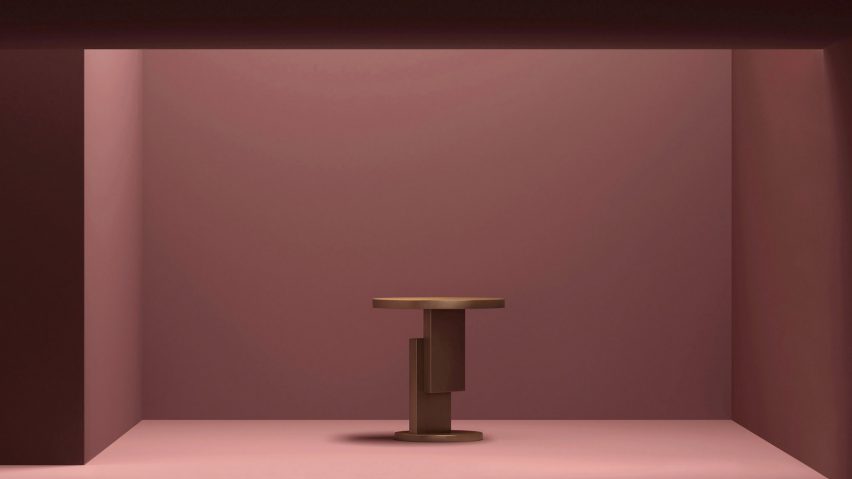
Six emerging Chinese designers showcased in Rising Talents exhibition at Maison&Objet
Maison&Objet's Rising Talent Awards 2019 have focused on six young Chinese designers that are redefining traditional forms with innovative materials and modern shapes.
After showcasing new talent from the UK, Lebanon and Italy in previous years, the Paris furniture fair chose to spotlight China's fast-developing design scene for the 2019 edition, which took place from 18 to 22 January.
The six designers honoured were Mario Tsai, Chen Furong, Ximi Li, Hongjie Yang, Chen Xingyu from Bentu Design and Frank Chou.
"Most interesting is search for identity"
The exhibition was presented by design consultancy Designchain, and curated by a panel of judges that consisted of international designers all of whom have a presence in China. They included Tom Dixon, Luca Nichetto and Lyndon Neri and Rossana Hu, of Shanghai-based studio Neri&Hu.
The judges feel these six designers and studios are exemplary of a new Chinese design language.
"With the rapid growth of the Chinese economy and the need for a cultural expression of its own, we see a large number of emerging designers that have started to create their own voice that deals with the issue of heritage and identity," said Neri.
"What is most interesting is the Chinese designer's search for identity, to not just be a look-like of Western design but how to fold in the centuries-old rich Chinese craftsmanship heritage and tradition," added Nichetto.
"A really exciting time for China"
CEO of Designchain Stephanie Zhao explained that the studios' "Chinese-ness" is not immediately visible in their work, that it influences the designs on a more subtle level.
"All six of them are understandable by Western countries," said Zhao. "I think what really influenced them about China is the inner part in the DNA. It is not very significant, or easy to tell from the material or the shape. But it is the inner concept."
"It is very interesting timing now in China," she added. "The old and the new and all the contrast – that comes out with really creative new things. It is a really exciting time for China."

Beijing-based furniture designer Franck Chou's latest collection includes the Middle chair, based on traditional Chinese bamboo chairs; Combo, a modular leather and wool sofa which takes its lead from handmade upholstery processes; and the geometric Stack table.
"My designs do not have obvious oriental characteristics, but actually the design ideas and inspirations originate from deep-seated thoughts about modern and future oriental lifestyles," said Chou.
Chou's studio is committed to responsible design and is interested in popularising design education in China through cultural exchange and design forums.

Mario Tsai focuses on sustainability and aims to give his collections a modern look and tactile quality. Tsai founded his studio in Hangzhou in 2014, with an emphasis on research, new materials and their application.
At Maison&Objet he exhibited a selection of recent pieces, including the aluminium tube-shaped Pig Side Table, a 25-centimetre-diameter aluminium tube on four legs with a round top, and the Pure Desk.
Alongside designing furniture, Tsai turns his hand to designing industrial products and interiors, working on projects in Denmark, Italy and Norway as well as at home.

Shanghai-based designer Ximi Li worked as a chief designer at Neri&Hu for six years before founding his own independent design brand Ximi Li Design and furniture brand Urbancraft in 2016.
Urbancraft's designs include the stainless-steel, leather and oak Jiazhuang dressing table, inspired by traditional Chinese jewellery boxes; the Yuan (meaning "circle") collection, made from steel, walnut and mirror; and the interlocking BY3 terrazzo, glass and marble coffee table system.
Li studied furniture design at Politecnico di Milano, and worked for architect and designer Andrea Branzi during his studies.

Design Academy Eindhoven graduate Hongjie Yang explores the divide between the natural and the man-made.
"I focus on work that examines the dichotomy between nature and culture," said Yang. "Many of my works search for a new class of aesthetics which transcends the divide between the power of humans and nature."
His pieces simulate a natural form, which he achieves by using technology and man-made materials in the design process. He exhibited the Synthesis Monolith mirror, coffee table and bench – all made of aluminium – at Maison&Objet.

Guangzhou-based studio Bentu was founded by Chen Xingyu, Peng Zeng, Chen Xingguang and Xu Gang in 2011.
Xingyu addresses waste caused by China's rapid development by using recalled materials and construction debris in his designs and has experimented with making products from coal cinder, bone ash, broken ceramics and even yak dung.
"The purpose of design is to discover the important problems existing in human society and to provide solutions," he said.
The studio's latest Terrazzo Collection – including the The Yuan plant pot, Tu and Planet pendant lamps and a flexible table system – uses recycled ceramic waste, concrete and leftover stone aggregate to attempt to demonstrate that furniture can be more sustainable.

Chen Furong is the founder of lighting, furniture and accessories brand WUU. Based in Xiamen, Furong works with local artists in Fuzhou 170 miles north of the studio, to combine traditional crafts with technology.
"From the beginning, WUU has been passionate about researching materials and crafts, and applying the results to our products. This distinguishes us from mass-produced items," said Furong.
His Maison&Objet collection included the Touchable Light lamps and a series of minimal, aluminium vases named Morandi, inspired by the works of the Italian painter.
Furong also exhibited the Axis table, made with a single piece of aluminium, and the Blueprint table which features solid aluminium legs and a transparent surface.